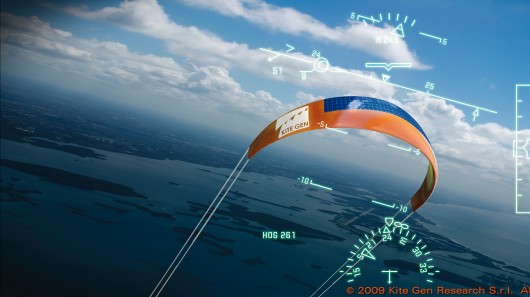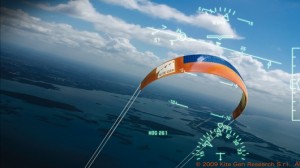
Wind-power has rapidly evolved over the last decade to become a key part of the alternative energy mix with towering rows of turbines now dotting horizons all over the globe. One of the drawbacks to the conventional windmill approach is that they are still low to the ground, so why not go to where the winds are stronger and more consistent – up. Like the Magenn Air Rotor System, KiteGen technology is aiming to do just that. The system generates energy by guiding tethered kites over a predefined flight path in order to rotate a ground based turbine and, while only in the testing and planning phases, it looks to be a promising solution. The large wings (or kites) in the KiteGen system are driven by avionic sensors located in a dome base that also houses an electric generator. The control system is designed to automatically guide the kites in order to rotate the turbine and maximize torque. As altitude increases, average wind speeds increase as well. This is a factor that traditional wind turbines cannot compete against, since they are stationary and are generally only able to reach heights of 100m.
Not only does this technology have the potential to outdo the efficiency of conventional wind turbines, it also takes up much less space than what you need to create an entire wind turbine farm. While a 1000 MW wind turbine farms takes up an area of 250 to 300 kilometers squared, KiteGen says its approach will take up as little as 5 to 6 kilometers squared for the same output. It is estimated that a wind power plant of this type can produce around 500 GWh yearly.
KiteGen predicts it can achieve energy costs of US$0.02-$0.05 per kWh, as compared to $0.05-$0.09 per kWh for fossil energy and $0.15 per kWh for current windmills. Invented by Massimo Ippolito, KiteGen was founded in 2007 and is headquartered in Chieri, near Turin, Italy. The engineers are currently working with a sister company called Sequoia Automation S.r.l. which takes care of technical software development and mechanical engineering.
Currently the system is still in the development and standardization process while hoping to gather the funding necessary to produce the first full-sized model. An off-shore system is also in the works.
The following video provides an overview of the KiteGen system.
(Source)

 Follow
Follow